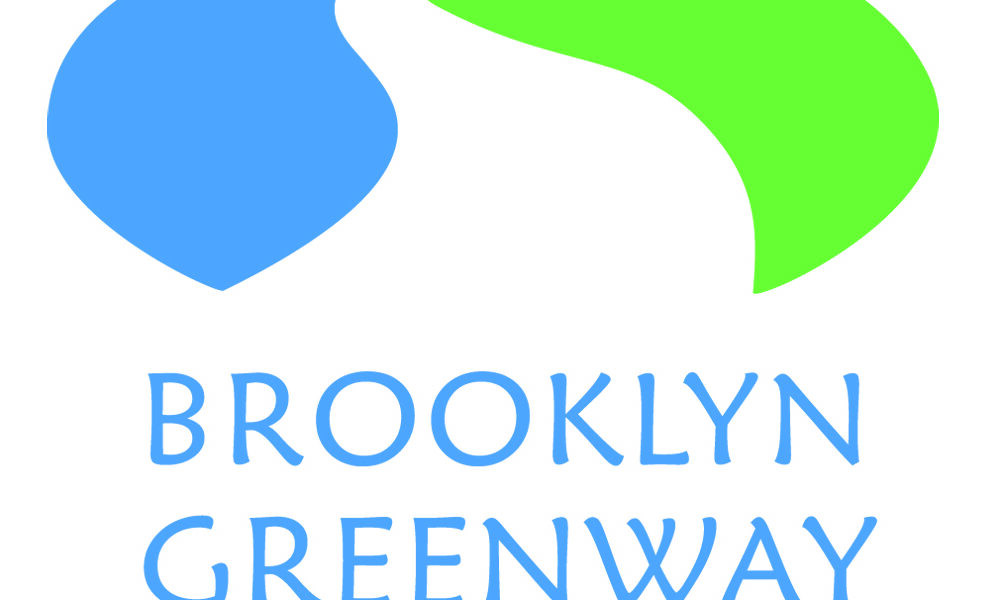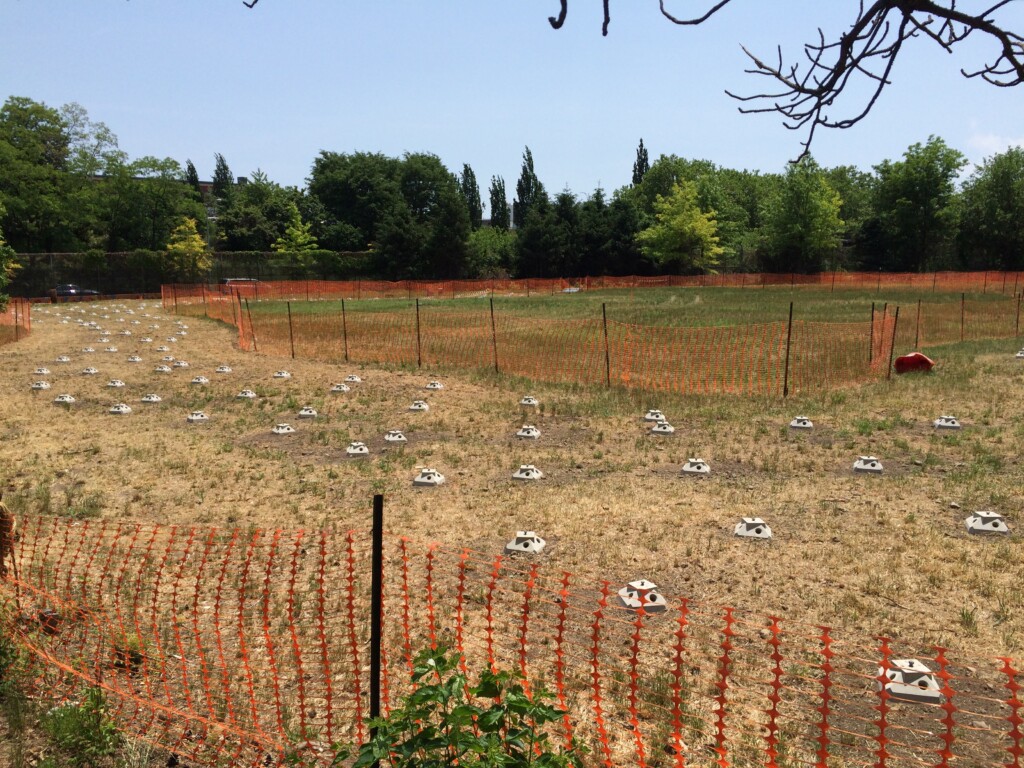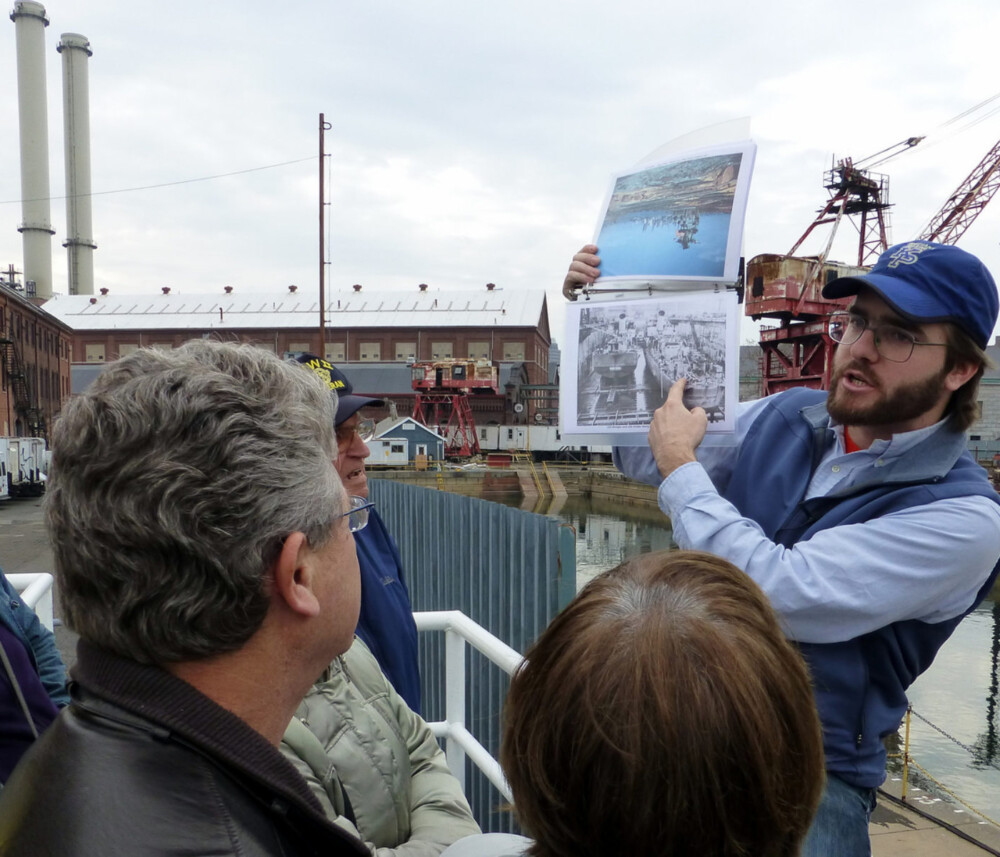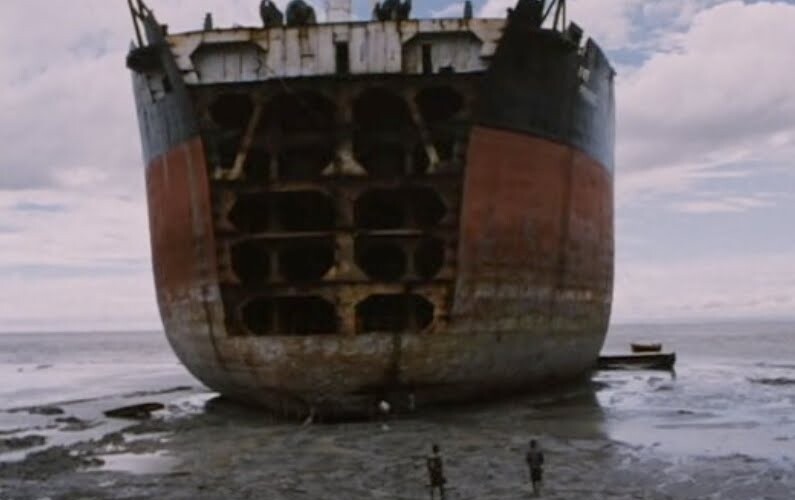With all the major development projects underway at the Brooklyn Navy Yard (the Green Manufacturing Center, Wegman’s, Building 77, Steiner Studios expansion – the list goes on …), it is easy to forget a very exciting, if comparatively modest, project in a quiet corner of the Yard.
For the last several years, the Brooklyn Greenway Initiative has been working to transform a portion of the Yard into a publicly-accessible greenspace. After years of planning, construction is now well underway of the Naval Cemetery Landscape, built on the site of the former Brooklyn Naval Hospital Cemetery. Located at the corner of Williamsburg St West and Kent Ave, this park will be a beautiful pocket of nature and civic history along the planned Brooklyn Waterfront Greenway, a 14-mile bicycle and pedestrian path which will run from Greenpoint all the way to Bay Ridge.
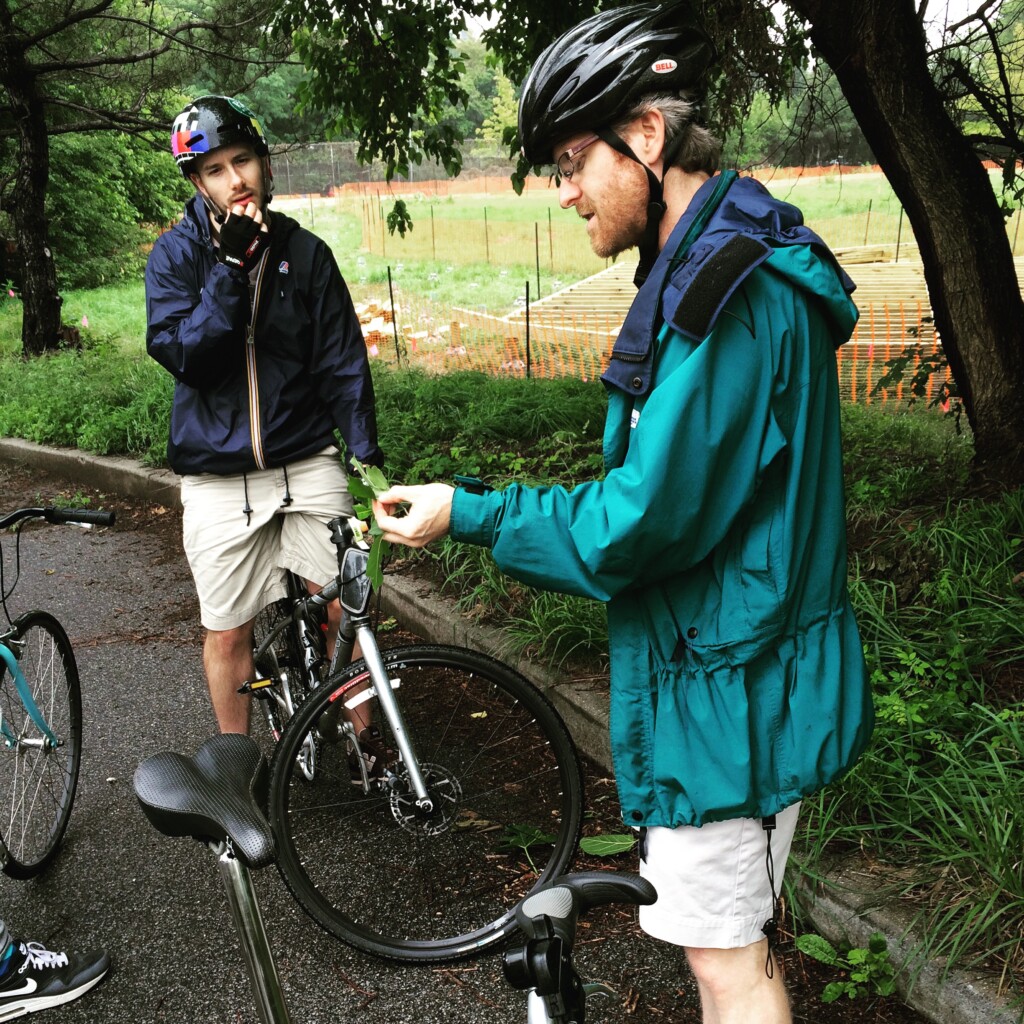
We frequently stop by the site on our public tours of the Brooklyn Navy Yard, but earlier this summer, as I was doing some practice for an upcoming Urban Ecology Bicycle Tour, I found the landscape’s designers and engineers hard at work. Construction and design of the park has been no easy task due to the need to embrace significant historical and cultural considerations.
Established in 1831, the Naval Hospital Cemetery was created alongside the landmark Brooklyn Naval Hospital, which opened in 1838, on land the US Navy had purchased in 1824. The cemetery ceased burials in 1910, and in 1926, roughly 900 graves were disinterred and relocated to the Cypress Hills National Cemetery in Brooklyn; unfortunately, there were more than 1,300 known burials at the time, and subsequent investigations have shown that more than 2,000 people may have been buried there. After the cemetery’s closure, the Navy continued to use the site for other purposes, using it for tennis courts, a parking lot, and lumber storage at different points in time.
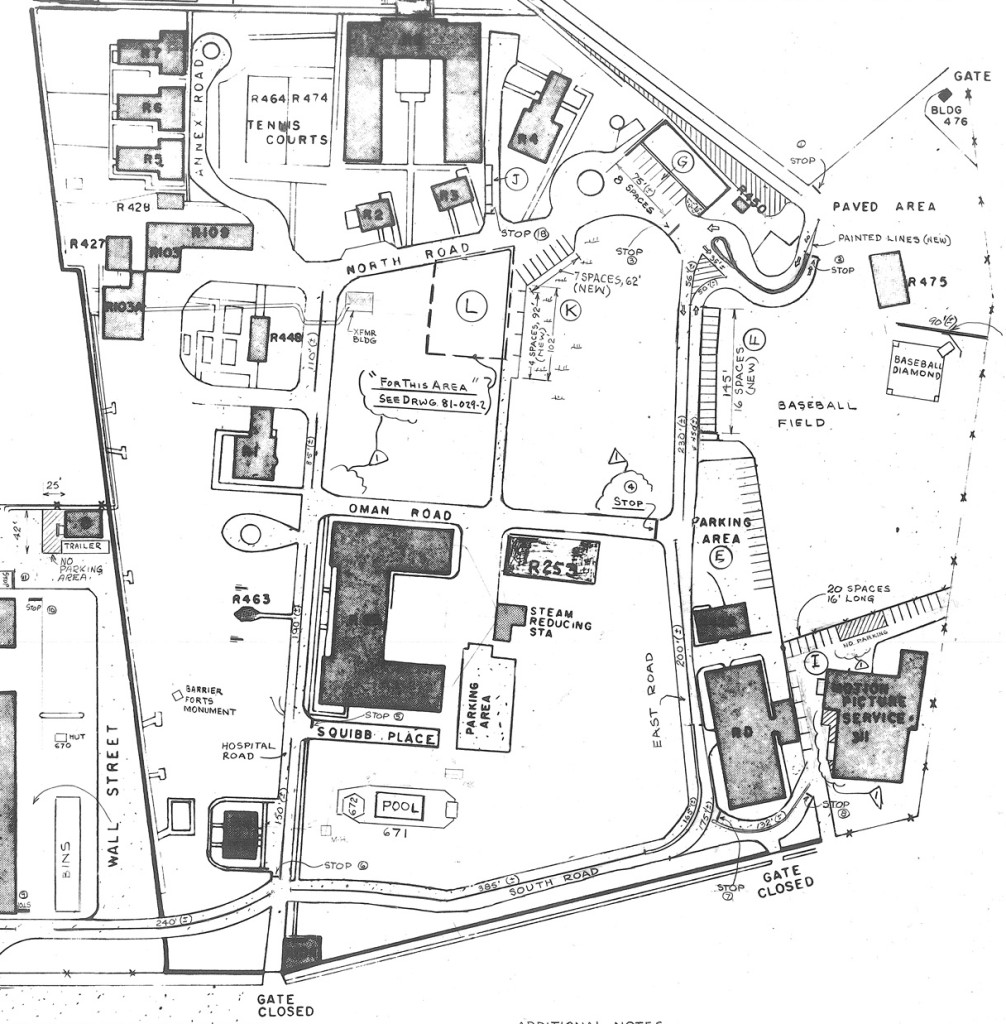
When the Brooklyn Navy Yard was decommissioned and sold to New York City in 1966-67, the former Naval Hospital was retained by the federal government and became part of Naval Station New York, which operated until 1990. Clearly no one worried too much about the cemetery at this time – it was turned into a baseball diamond – but with the closure of the naval station, the federal and city governments began to prepare for the handover of the property, and extensive archeological and archival investigations were conducted. Not only were the records of the missing burials discovered, but so too were actual human remains of unidentified sailors. Since 2001, when the 24-acre hospital property was transferred to the city along with the cemetery, the city and the Brooklyn Navy Yard Development Corporation have committed to not build on or disturb the site.
This is one acre that won’t be part of Brooklyn’s building boom, but one thing New Yorkers love to do with old cemeteries is build parks on them; famous examples include Washington Square Park, Bryant Park, and Union Square, among others, and the Naval Cemetery Landscape is a proud continuation of this tradition. Unlike those other sites, however, the limitations on construction and activity in the Naval Cemetery site are greater, in order to maintain proper respect for the deceased.
The park will be outfitted with a boardwalk, so visitors will cause minimal disturbance to the soil. But in order to build the boardwalk, the designers could not dig any foundations that would disturb the ground and potentially disrupt graves. BGI and their design team, which includes Marvel Architects, Nelson Byrd Woltz Landscape Architects, and GRANT Engineering, responded to this need by planning a minimally-invasive foundation system, which will be made from Black Locust wood, a species native to the region. This foundation system, called “Diamond Pier,” uses a system of “pins” – specially-designed steel pipes – which penetrate the soil, providing significant structural stability without having to dig footings or pour concrete.
Additional features of the new park will include an ambitious planting and landscape plan comprised entirely of native species (click here to see the complete design, along with a listing of these species). Wildflowers will be planted in a rectangular formation, to evoke grave sites, and the plan also includes a “sacred grove” of trees. This beautiful landscape will provide habitat for birds and promote a healthy population of pollinators, as well as providing much-needed greenspace for the neighborhoods of South Williamsburg, Clinton Hill and Bedford-Stuyvesant, and a great little rest stop for cyclists using Brooklyn’s busiest bike lane.
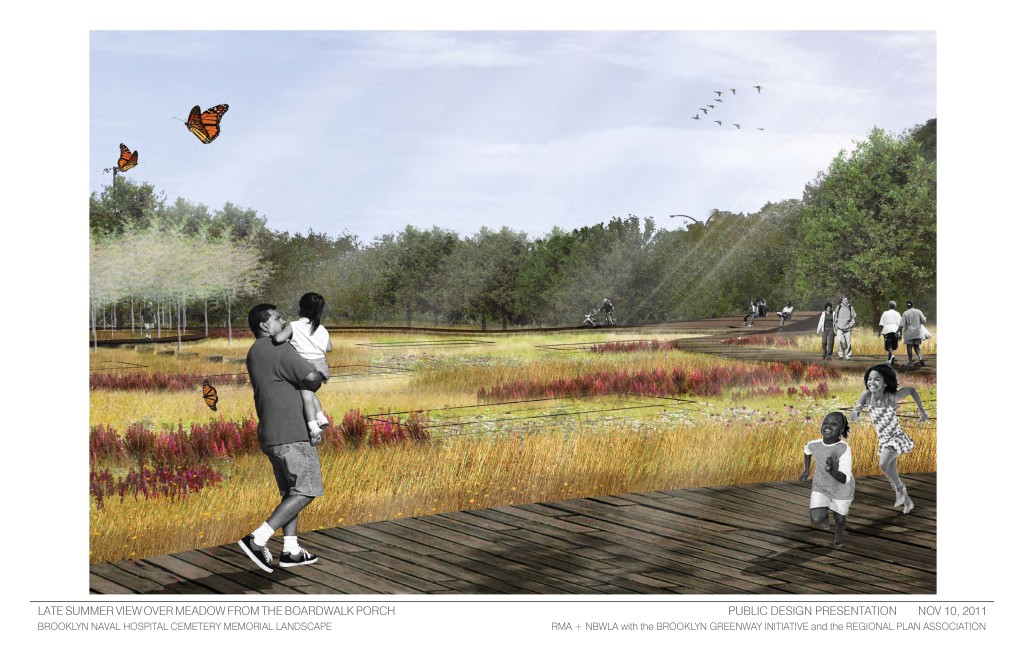
[Editor’s Note: The Naval Cemetery Landscape is now open to the public. Please check the Brooklyn Greenway Initiative website for open hours and programming.]
Additional research contributed by Andrew Gustafson.

